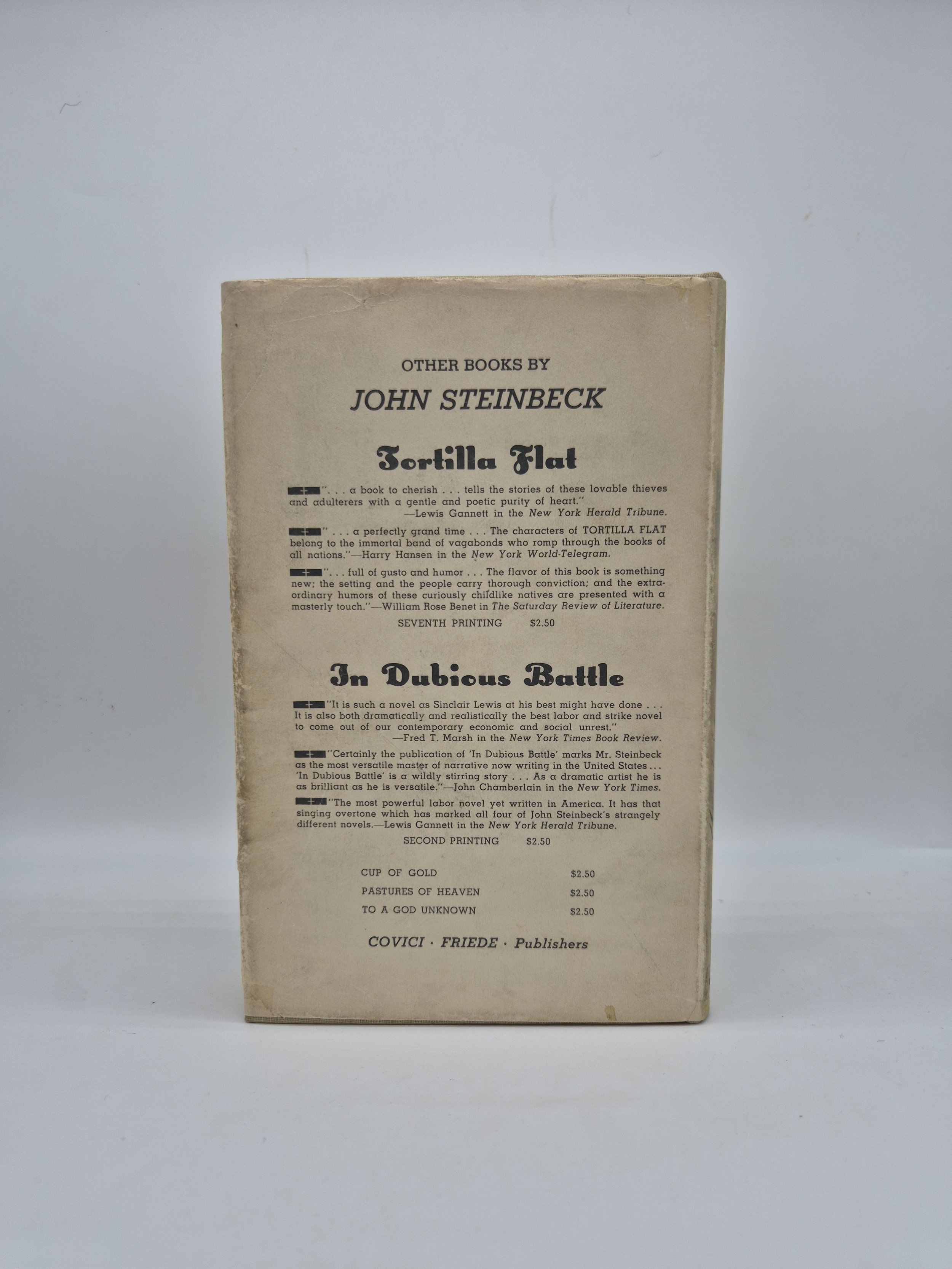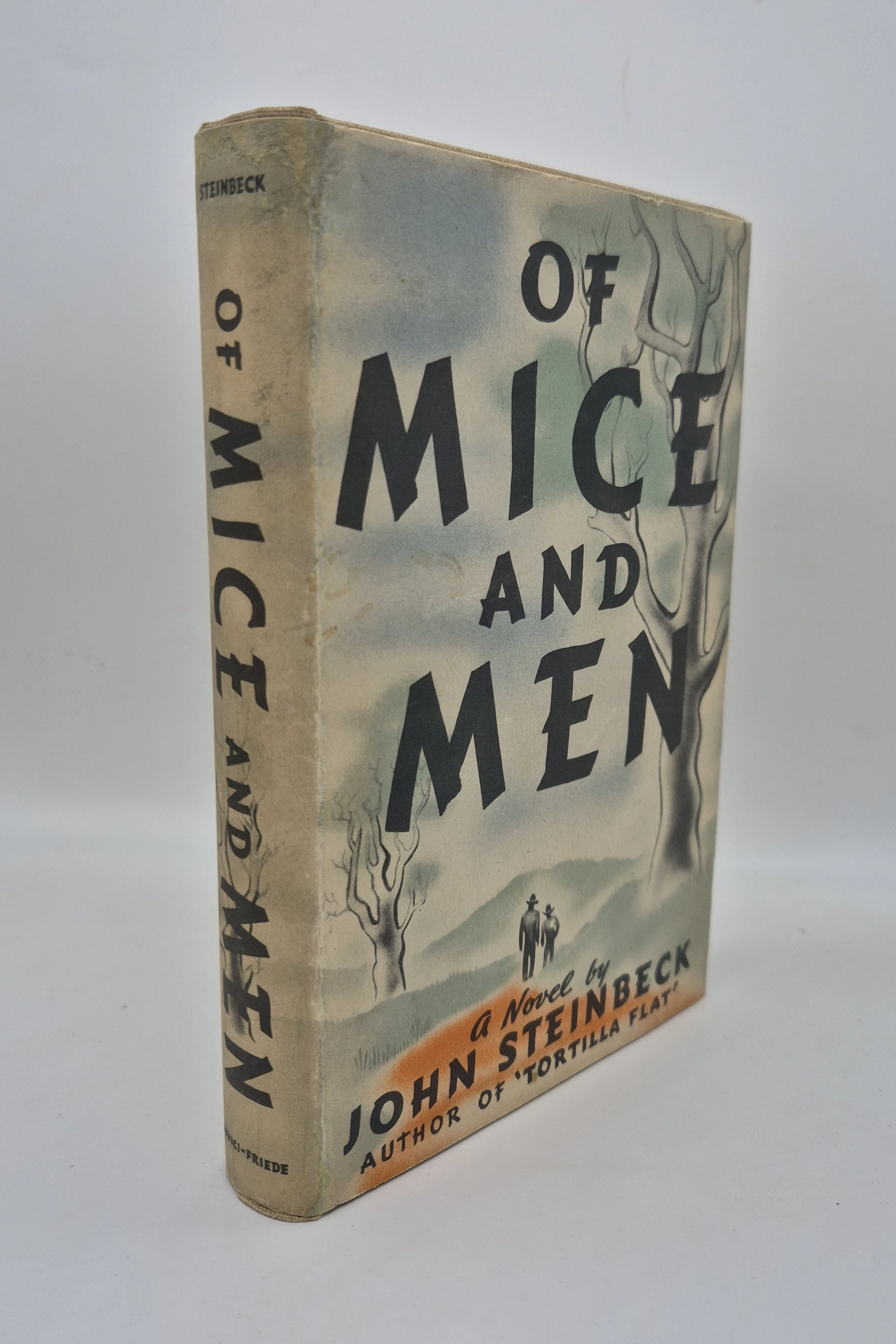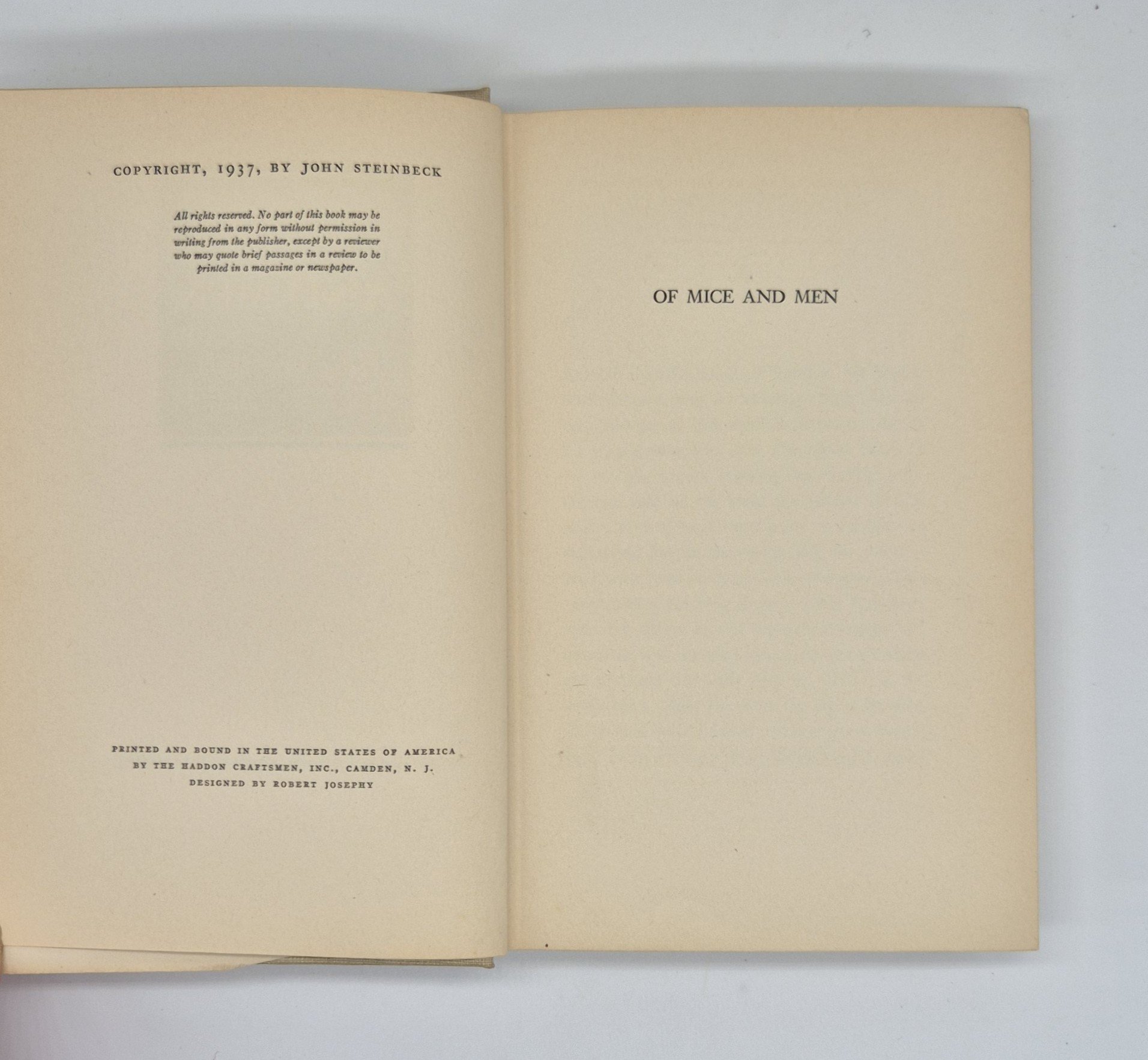




STEINBECK, John. Of Mice and Men.
New York: Covici Friede Publishers, 1937
8vo., dark cream cloth with printed black and orange labels to upper cover and spine; together in the neatly-clipped dustwrapper featuring an image of the two men in a country setting; printed in black, green, orange and blue; pp. [vi], 7-186, [vi]; with title page in orange and black; a beautiful copy, lightly bumped at spine tips and corners; the text block marginally and evenly toned throughout but otherwise clean and bright; the exceptional dustwrapper retaining much of its original colour, ever-so-slightly darkened along the spine and folds, with the odd crease and nick to extremities; sometime expertly restored at head and foot of spine, as well as along folds.
First US edition, second issue ("loosely" to page 9, no dot between ‘88’ to p. 88, etc.). The title is taken from the Robert Burns poem ‘To a Mouse’: “"The best laid schemes o' mice an' men / Gang aft agley". The book was nearly lost entirely after being eaten by Steinbeck’s dog, Toby. “the poor little fellow may have been acting critically”, Steinbeck later claimed. Last year, a piece of the original chewed manuscript was sold at auction.
“Try to understand men” Steinbeck wrote in his journal in 1938. “…if you understand each other you will be kind to each other. Knowing a man well never leads to hate and nearly always leads to love.” So lies the basic theme behind Of Mice and Men, Steinbeck’s 1937 novella set during the Great Depression. Centering around the figures of Lennie and George, the 186-page work was based upon Steinbeck’s own experiences of farm work, which he undertook as a teenager alongside migrant workers in the 1910s.
Though now often taught in schools the world over, the book has been banned and censored multiple times since its initial publication, mostly in the US, for its perceived use of offensive language, racial slurs and for promoting the act of euthanasia.
Steinbeck’s most famous work, and a masterpiece of American literature.
New York: Covici Friede Publishers, 1937
8vo., dark cream cloth with printed black and orange labels to upper cover and spine; together in the neatly-clipped dustwrapper featuring an image of the two men in a country setting; printed in black, green, orange and blue; pp. [vi], 7-186, [vi]; with title page in orange and black; a beautiful copy, lightly bumped at spine tips and corners; the text block marginally and evenly toned throughout but otherwise clean and bright; the exceptional dustwrapper retaining much of its original colour, ever-so-slightly darkened along the spine and folds, with the odd crease and nick to extremities; sometime expertly restored at head and foot of spine, as well as along folds.
First US edition, second issue ("loosely" to page 9, no dot between ‘88’ to p. 88, etc.). The title is taken from the Robert Burns poem ‘To a Mouse’: “"The best laid schemes o' mice an' men / Gang aft agley". The book was nearly lost entirely after being eaten by Steinbeck’s dog, Toby. “the poor little fellow may have been acting critically”, Steinbeck later claimed. Last year, a piece of the original chewed manuscript was sold at auction.
“Try to understand men” Steinbeck wrote in his journal in 1938. “…if you understand each other you will be kind to each other. Knowing a man well never leads to hate and nearly always leads to love.” So lies the basic theme behind Of Mice and Men, Steinbeck’s 1937 novella set during the Great Depression. Centering around the figures of Lennie and George, the 186-page work was based upon Steinbeck’s own experiences of farm work, which he undertook as a teenager alongside migrant workers in the 1910s.
Though now often taught in schools the world over, the book has been banned and censored multiple times since its initial publication, mostly in the US, for its perceived use of offensive language, racial slurs and for promoting the act of euthanasia.
Steinbeck’s most famous work, and a masterpiece of American literature.
